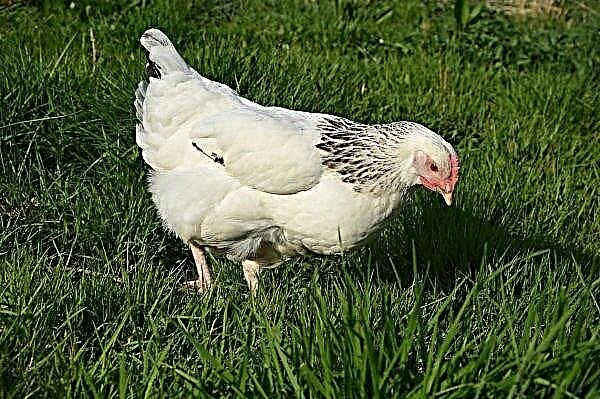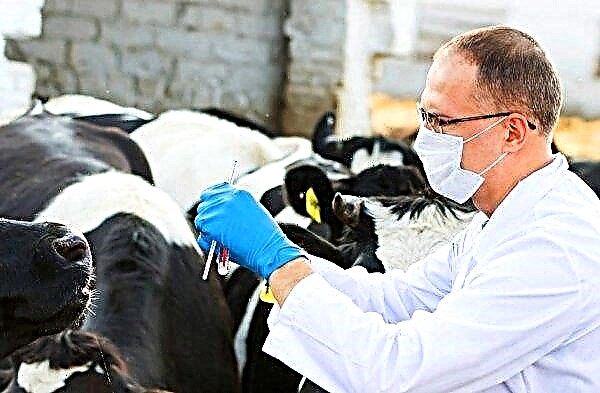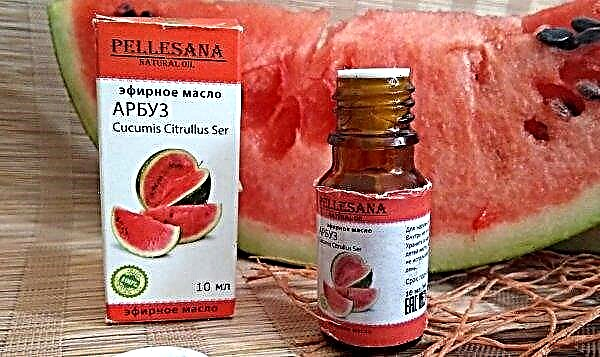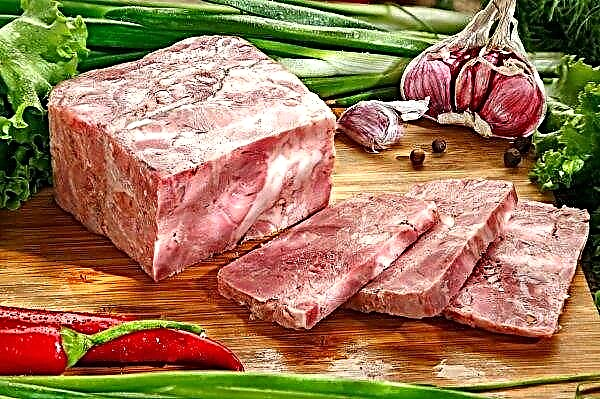This insidious chicken disease, known to veterinarians for more than a century, is still not amenable to successful treatment, but it is confidently prevented through well-developed preventive measures. About the features of Newcastle disease and how to prevent it, read the article.
General Description of the Disease
This disease of chickens, also known as Asian plague, chicken plague or pseudo-plague, was first recorded at the beginning of the last century in Indonesia, from where it moved to the British Isles.
There, the disease actively manifested itself near the city of Newcastle, whose name migrated to the name of the disease. From Great Britain, chicken plague came to the United States, and during World War II spread throughout Europe.
Newcastle disease is a very dangerous infectious disease that affects the internal organs, respiratory and nervous systems of chickens. The complexity of the fight against the disease is exacerbated by the enormous variability of the strains of its causative agent, the PMV-1 virus, which manifest themselves in such a variety of ways that it is often difficult to determine whether the bird was ill with cholera, bronchitis, laryngotracheitis, bird flu or it was struck by chicken plague. Therefore, with this disease, the correct diagnosis is extremely important.
The complexity of the fight against the disease is exacerbated by the enormous variability of the strains of its causative agent, the PMV-1 virus, which manifest themselves in such a variety of ways that it is often difficult to determine whether the bird was ill with cholera, bronchitis, laryngotracheitis, bird flu or it was struck by chicken plague. Therefore, with this disease, the correct diagnosis is extremely important.
Did you know? Only strict poultry standards from Europe include at least 180 chicken breeds. On a global scale, there are many more.
Forms of the disease
In addition to masking for other diseases, Newcastle disease also has various forms, represented by different symptoms.
Doyle Shape
In this acute infectious form of the disease, a fatal outcome is observed in 90% of cases. If you do not take urgent measures to localize the disease, you can very quickly lose the entire population of chickens.
Symptoms of this form of the disease are expressed:
- exhaustion of the chicken body;
- lack of appetite;
- muscle tremors;
- heavy breathing;
- loose stools and blood in the litter;
- manifestations of conjunctivitis;
- clouding of the cornea of the eyes;
- in some cases, the onset of paralysis.

Beach Form
With this acute course of the Asian plague and timely measures taken, up to half of the birds affected by the infection can survive.
Important! With a survival rate of up to 50% among adult chickens affected by Newcastle disease, the mortality rate of young animals is 90%.
In this case, symptoms appear in the form of:
- coughing
- the appearance of mucus in the respiratory organs;
- respiratory problems;
- conjunctivitis.

Bodett form
This form is dangerous mainly for chickens. The fatal outcome for an adult livestock is just over 30%. In birds of any age, the nervous system suffers primarily in this form of the disease.
Hitchner uniform
This form of the course of the disease is the most sparing. With a low tone and poor appetite, the laying hens still carry eggs, although they have too thin shells. The low virulence of this strain allows its use in the preparation of the vaccine.
Sources of the disease
The disease has multiple pathways.
Most often they are expressed:
- infection from an infected bird during the incubation period, lasting from 3 to 10 days;
- transmission of infection from vaccinated chickens with weak immunity;
- infections from pigeons and wild birds;
- infection by rats and mice;
- transmission through tick bites and other insects.
The intensity of infection is exacerbated by the fact that the virus can spread through a circle with a radius of up to 5 km. In addition, it is well transmitted through the water that healthy chickens drink with the infected. The infection is also able to maintain its pathogenic properties on feathers and eggs for a long time.
Did you know? Hens are not only extremely diverse in color, which includes almost the entire color palette, but also vary greatly in size and weight in adulthood. There is a breed of chickens whose mass is less than half a kilogram, and there are 7 kilogram giants.
Common signs of the disease in domestic chickens
Symptoms of the disease vary greatly. They are influenced by a variety of strains of the disease, as well as vaccination among poultry. The incubation period in unvaccinated chickens exposed to infection lasts up to 10 days, after which the entire livestock population dies from the acute form of the disease.
This form of Doyle manifests itself in the symptoms described above. Symptoms of the fine-tuning that are observed in vaccinated chickens are manifested in problems with the nervous, respiratory and digestive systems. With the nervous form in chickens, there is a violation of coordination of movements, expressed in arching of the neck, its twitching and twisting in different directions. With a respiratory form, serious breathing problems occur, which often lead to asphyxiation with subsequent death of the bird.
With the nervous form in chickens, there is a violation of coordination of movements, expressed in arching of the neck, its twitching and twisting in different directions. With a respiratory form, serious breathing problems occur, which often lead to asphyxiation with subsequent death of the bird.
In large farms where the entire population has been vaccinated, an atypical form of the disease is sometimes observed, accompanied by a drop in egg production and a decrease in reproductive abilities. Vaccinated chickens may experience respiratory problems and conjunctivitis.
Diagnosis of Newcastle disease
The variability of the strains of this disease, the diversity of its forms complicates the ability to impersonate other diseases significantly complicates its accurate diagnosis.
The veterinarian makes a preliminary diagnosis based on observations of diseased birds and on the results of the autopsy of dead animals. But an accurate diagnosis can only be made in the laboratory when a virus is detected.
Disease treatment
Hundred-year observation of the course of Newcastle disease has not led to the development of reliable therapy. As a rule, the treatment of diseased individuals is considered inappropriate and even dangerous due to the possibility of infection of the entire bird population. Therefore, diseased chickens are destroyed, and the premises and equipment are thoroughly disinfected.
Disease prevention
Since diseased hens are usually not treated, but destroyed, because even surviving individuals after the disease remain dangerous virus carriers for a year, preventive work is of paramount importance.
Sanitary Prevention
Sanitary prophylaxis is facilitated by the presence of agents that have a detrimental effect on the virus, represented by:
- ultraviolet rays;
- boiling water;
- phenol;
- formaldehyde;
- alcohol
- betapropiolactone;
- ethyleneimine.
In addition to the mandatory maintenance of clean rooms and equipment, feeders and drinking bowls, it is necessary to eliminate all contact between chickens and pigeons, rats, mice.
Vaccination of chickens
In addition to preventive measures aimed at disinfecting the surrounding chicken space, timely and universal vaccination of birds is of paramount importance. Young animals are vaccinated either twice with a live vaccine at the age of 20 and 50 days, or once at four months with an inactivated vaccine.
Vaccines differ from each other by the strains on the basis of which they are made. The most popular vaccines on farms today are the Borom 74 and La Sota vaccines. Inoculate birds usually in the fall or in the winter. The protective functions of the administered vaccine appear 3-4 days after vaccination and last for 3-12 months.
Adult vaccination
Live vaccines quickly create the required protection against viruses, but they last a short time for 3 months. Most often they are used to vaccinate broilers. For adult laying hens, inactivated vaccines that are effective throughout the year are more suitable. Before the introduction of the vaccine, the layers are fed grain enriched with vitamins A, B and C, which strengthen the immunity of the bird and make it more resistant to viral attacks.
Important! Vaccination should be carried out at a young age, since the introduction of a vaccine, especially lively, in adult birds is fraught with a drop in egg production and a decrease in reproductive functions.
Vaccination is carried out:
- traditional method;
- subcutaneous administration;
- spraying in the space of the chicken coop.
Vaccination of chickens. Newcastle disease: video
Newcastle chicken disease is dangerous not only for its incurability, but also for its ability to spread rapidly, which threatens the life of the entire bird population. But timely vaccination of chickens and other preventive measures are able to minimize the risk of disease.












